Tiak [tīăk] means stick in the local languages in the Altai Mountains of North Central Asia. Tiak is also the name for the single pole used in all the traditional skiing in that region. Prior to 1900, the single pole was used by pretty much all skiers in the world!
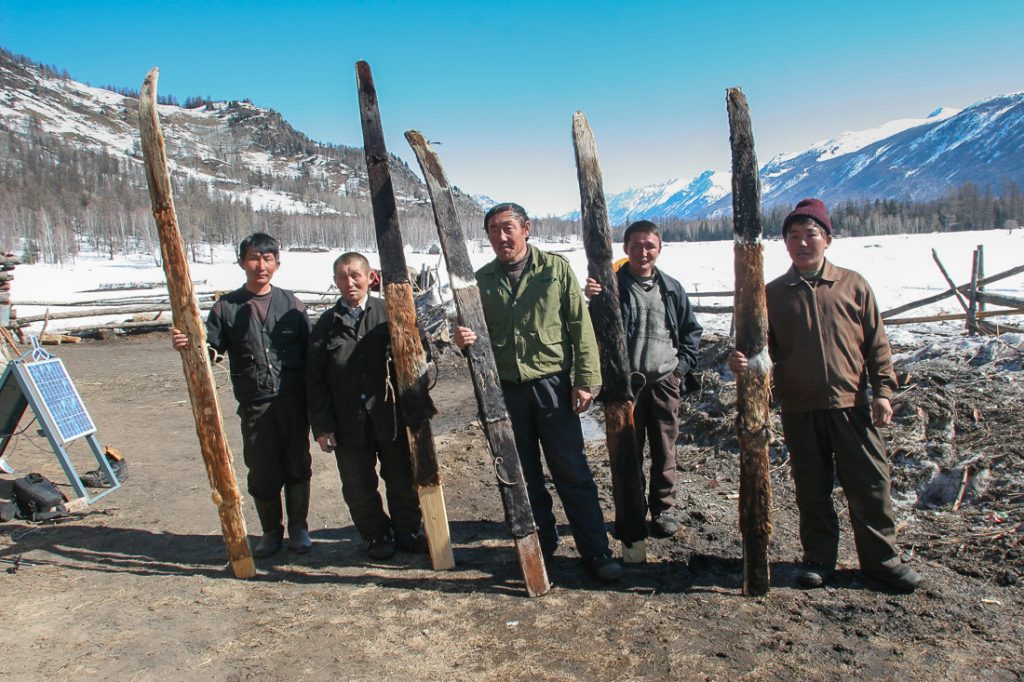
Imagine for a moment skiing down on 200 – 240cm length skis. Now add in that the skis are wide, too stiff to bend, and there is no sidecut.
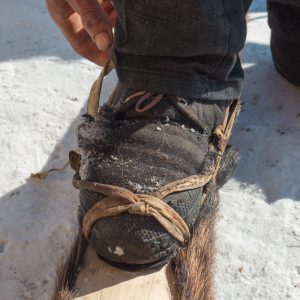
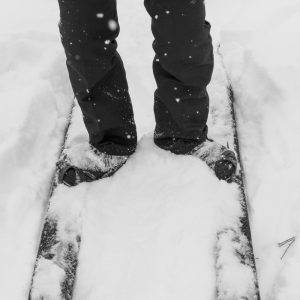
Now add in boots that are canvas – basically a Converse hightop with a little insulation – and they are held to the skis with a leather X that the toe of the shoe fits in. A leather thong around the heel completes the binding and keeps the shoe from falling out of the X while skiing. If your a skier with even a bit of imagination, this will be sounding like a bad dream. But wait, I’m not done. Now add a steep ungroomed slope, throw in a thick sprinkling of conifer/birch forest, some rocks, and often a shallow, punky, and unpredictable snowpack, made that way by temperatures consistently ranging between -20C to -40C. For a skier, this is a wake you up in a cold sweat kind of dream…..
Fortunately the traditional skiers in the Altai Mountains have a secret weapon. The Tiak.
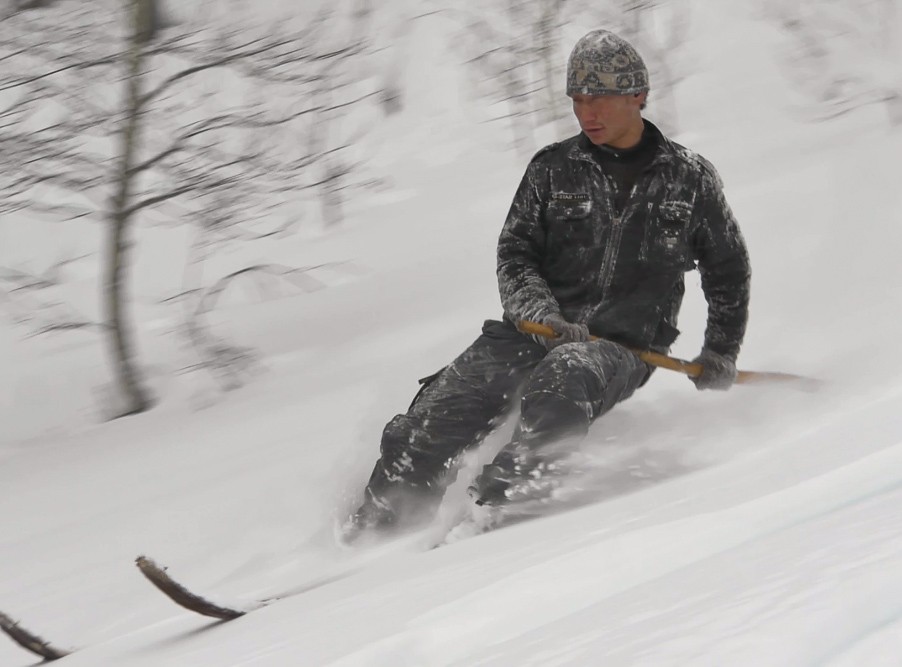
The tiak works like a tripod, creating a stable platform between two skis and the pole. Tripods are a famously stable structure, and are easily adjusted to variable terrain. By moving one of the 3 legs you can maintain a balanced position in an uneven world (see camera supports). In a dynamic situation like skiing, where the skier is moving, a “leg” (that would be the tiak) can move to wherever it is needed to create balance. For the Altai skiers that means they can lean in one direction or another and stay balanced with the aid of the tiak.
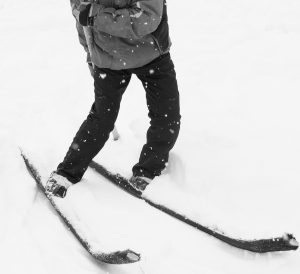
Why lean? Well, to turn for one thing. Leaning allows the Altai skier to tilt and drive the skis, impossible without the tiak. The tiak allows the skier to create a lot of leverage on the skis while maintaining a balanced position.
As well as the balance and leverage, tiaks bring some other rather unique advantages. Perhaps the biggest of these is quieting the arms and hands. Watch a skier with a lot of independent arm swinging and you will see an out of balance skier. With both hands on one pole, the arms and hands are not swinging independently (and wildly) from each other. The pole keeps the arms low and quiet, working together.
It took me quite a few years to figure most of this out, partly because the skis are really unique and wonderfully constructed and the tiak is, well, quite literally, a stick. Add to this a full load of ski biases keeping my understanding at bay. Ski instructors are notable for this and having taught for 30+ years I could match biases with the best of them.
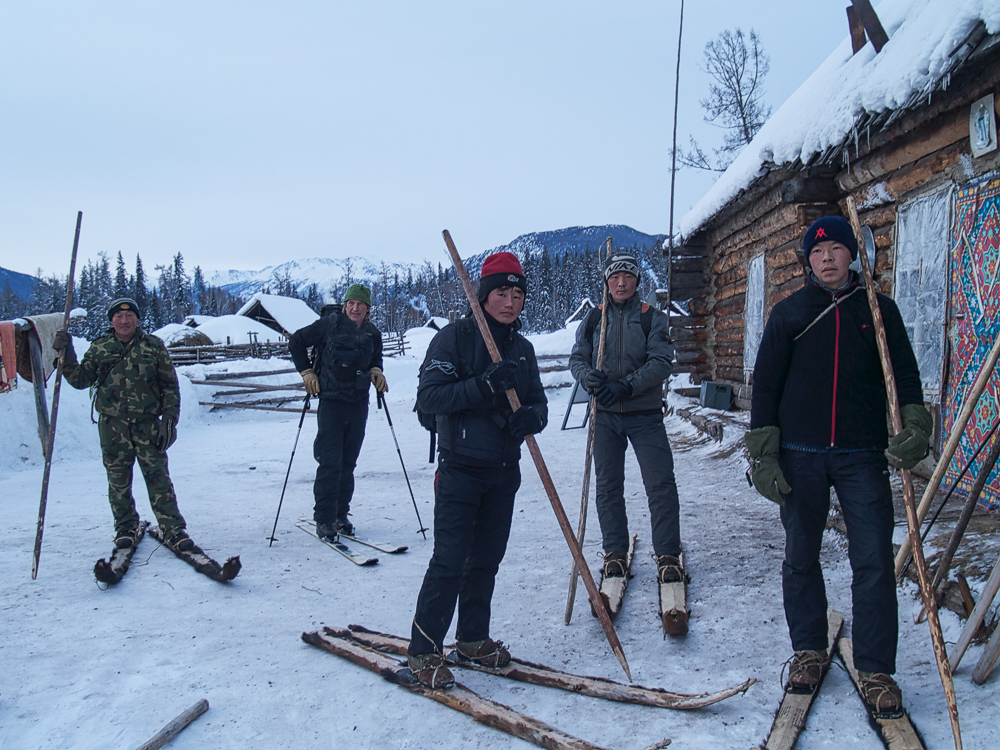
Over time I have come to realize the great advantages the single pole brings to this traditional style of skiing. The tipping point for advantages out weighing disadvantages is the addition of the climbing skin on the base of the ski. This slows the ski down enough to make the added forward momentum gained by the(correct) use of two poles not worth the energy expended. With this out of the way, what else is the function of two poles?
Two ski poles are not supposed to be used for balance on the downhill (that independent arm motion again)so that leaves them with the rather thin brief of assisting with (upper) body position and timing for turns. There is also the use of poles for balance while touring, and support for various maneuvers like kick turns or assistance in climbing up steep hills. These maneuvers can all be accomplished with one pole and a bit of practice.
In Part 2 I will look at the specifics of using the tiak with the Hoks. The Hoks are basically a modernized version of traditional skis, wide with a permanent skin attached. The Hoks are shorter then many of the traditional skis but function in a similar way, allowing many of the benefits of the single pole to transfer quite nicely to the Hoks.
Happy Skishoeing!


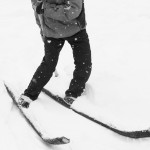
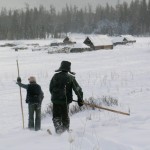
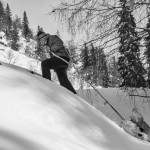
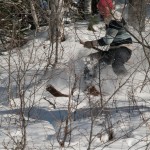
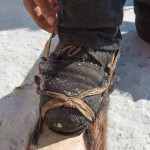
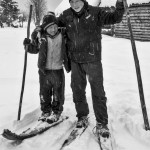
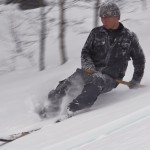
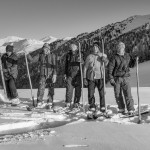
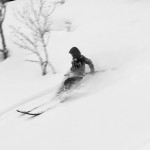
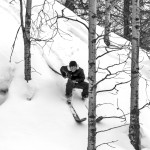
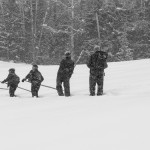
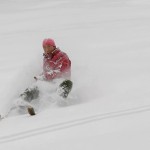
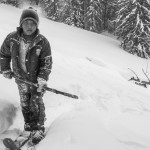
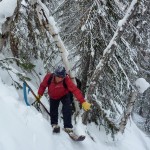
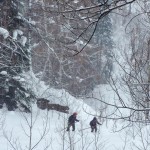
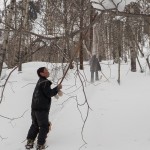
I think there is a great potential for a system that would somehow convert a pair of poles into a Tiak. It is pretty common to see backcountry skiers on cross country gear be unhappy with the downhill part of the trip. Maybe the conditions aren’t as good as they thought, or the gear isn’t as solid, or they just aren’t experienced enough to handle the situation, but for some, this would be a marvelous invention. Use the poles for uphill (classic cross country technique) but for downhill, snap the poles together and use the technique described here. I’m not sure if the baskets would be a hindrance, tough. I could see putting some sort of a bag over it (or just removing the basket).
All of this reminds me of this: (skip the first minute) — https://www.youtube.com/watch?v=-GpxE3oSv-g
Not quite the same, but both involve a dragging technique, as opposed to the stab and pivot technique of standard parallel skiing.
Having read this post at the end of last winter, and having just begun using my 145 Hoks with a single pole this winter, I must declare myself an absolute and complete convert. With the Hoks (with three-pin bindings and Garmont Excursion boots) and the single pole I can both climb and ski down so many places that nothing else would have allowed me to attempt, other than perhaps a full-blown and expensive set of Alpine Touring gear. And fiddling with the skins on AT gear would have been ridiculous on the short, brushy hills that my home province of Ontario has to offer.
I love my Hoks, and I love skiing them with single-pole technique. I love how using the pole quiets my arms and upper body, keeps me facing down the fall line, provides fore-and-aft stability, and keeps my tips from diving in deep snow or catching under fallen branches.
Hoks rule.
PS – When will we get to read part two of this post?
I am working on the Tiak (single pole) update 🙂
i would also like to see part 2….thanks…..there is no instructional on this except for watching videos and this was the best so far
I loved this. My Norwegian tante told the story of how her mother would take she and her two younger brothers to be dropped off at the mines in the mountains of Utah in the middle of the night. In the light of the full moon they skied home. She said that her mother used a single stick and that sight of her mother skiing brought to her mind a witch on a broomstick. She and her brothers skied behind her with the snow showering them whenever their mother used the stick as a brake to slow down.
I would also love to see part two. Lean and learn will likely go faster that way. Grin. Thanks, Nils, and I look forward to leaning and learning!
I’ve put a basket on the top end of my pole so I can push up hill easier, then quick spin around for the drag end down hill. Has anybody tried this?
Hi Jim, I am not aware of this being tried recently. There are pictures of this in the early 1900s though. How is it working?